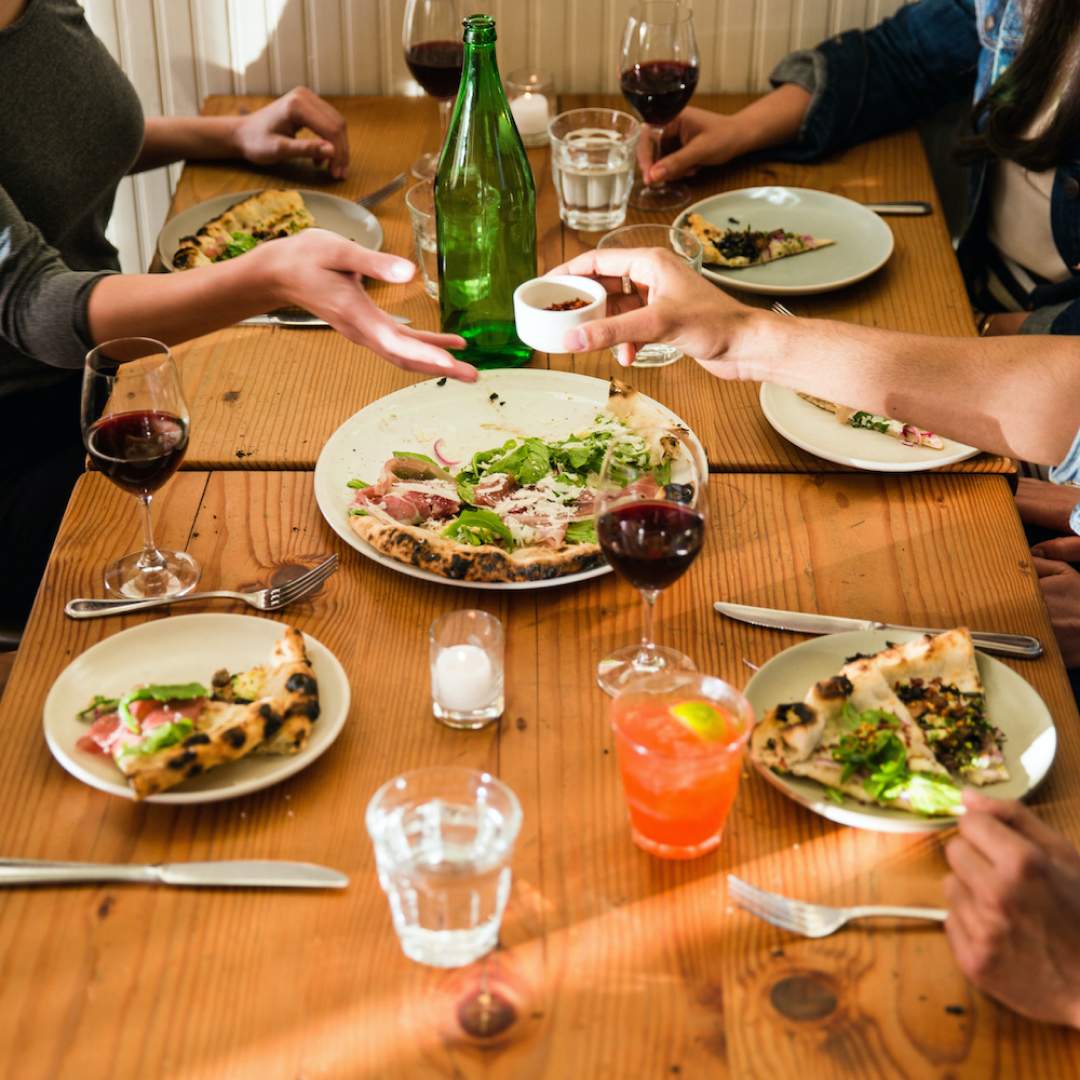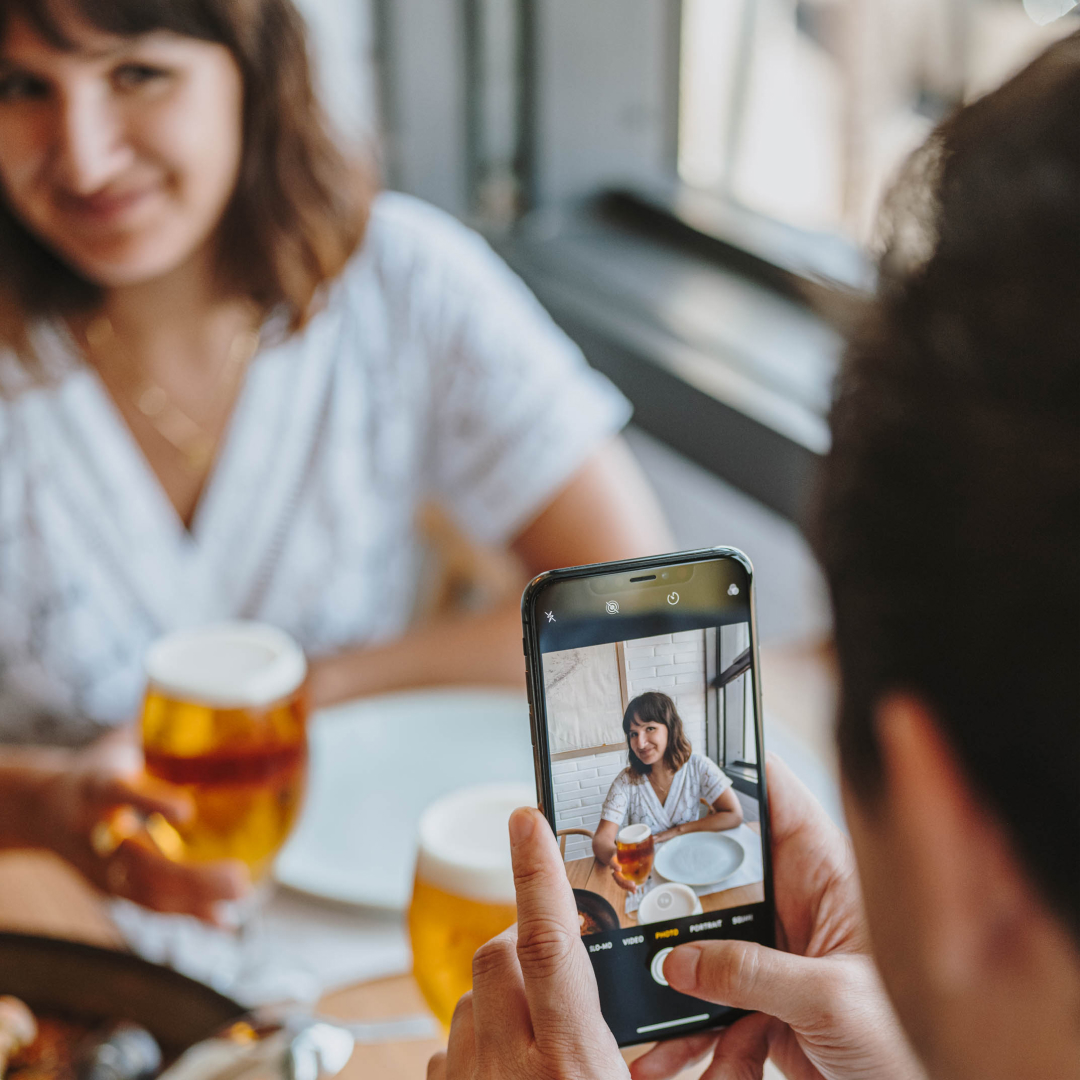A busy owner’s guide to restaurant social media strategy
Restaurant social media strategy refers to having a plan to connect with your guests where they spend their time: online.
A strong social media presence has never been a more important marketing strategy, whether your restaurant is new or 110 years old. Now is the perfect time to reconnect with longtime fans and introduce yourself to potential new diners interested in visiting your restaurant. According to OpenTable research, 87% of people have visited a new restaurant based on finding it on social media.
Even if you’re not super tech savvy, chefs and restaurants can be hugely successful on social media. Why? These platforms are perfect for creative expression—plus, who doesn’t like looking at beautiful images of food or staying in touch with their favorite restaurant? In fact, 62% of consumers follow food and beverage companies on social media to discover restaurants, according to a survey from OpenTable.
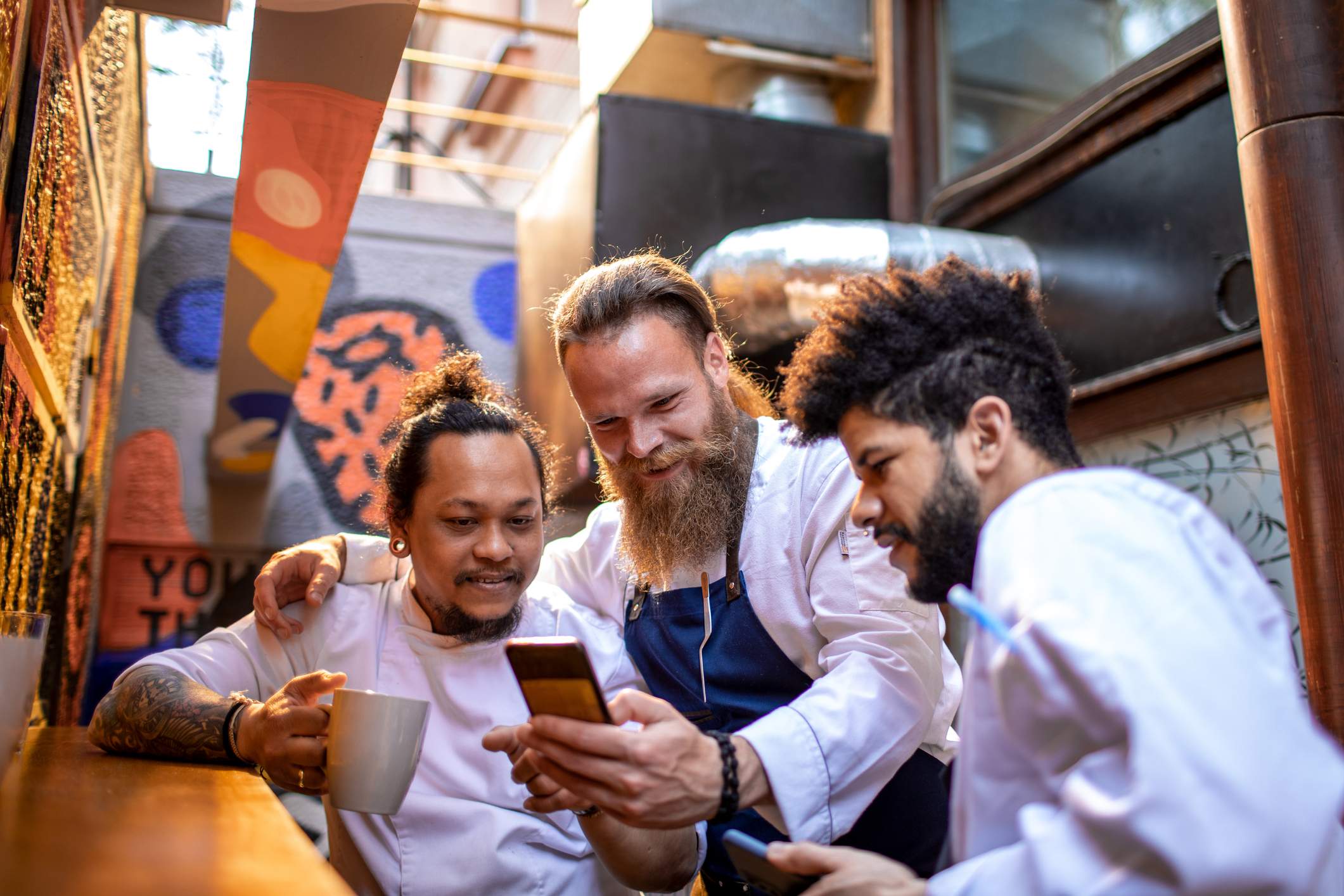
There are a few things to keep in mind before marketing your restaurant on social media. Though great-looking photos of delicious plates of food speak for themselves, these services are inherently social. Interact with your followers to get the most out of social media. And remember, these networks require ongoing attention and a consistent stream of content to thrive. Social media management takes practice. Success doesn’t happen overnight.
Take a deep breath: You don’t have to master every new social media platform that comes down the pike. Instead, choose the network(s) that meet your needs. In fact, focusing time on a couple of them—or even just one—is a viable strategy.
Here’s a rundown of the most popular platforms and some basic tips on how to add them to your marketing plan. (Want to learn even more? Download OpenTable’s comprehensive guide to social media.)
Quick links
How to market a restaurant on Instagram
How to market a restaurant on Facebook
How to market a restaurant on Twitter
How to market a restaurant on Snapchat
How to market a restaurant on TikTok
Create your social media account
Put facts up front
Share your best photos
Go behind the scenes
Partner for takeovers
Use hashtags
Share news
Have fun with it
How to market a restaurant on Instagram
If you’re not sure where to start, start here. Instagram is the #1 social media app for engagement with restaurant brands. Food is the most popular category on the platform. Instagram presents an opportunity for restaurants to connect with people’s passion for food and inspire them to share their experiences in multiple ways:
Stories
Have fun with Instagram’s stories feature, which allows you to share posts that will disappear in 24 hours. Stories are an important way to stay active on the Instagram platform. Use stories to
- Ask your followers questions like what menu items they’d like to see as a special.
- Take a poll at the tap of a button.
- Announce 24-hour offers like a free menu item or 20% off any glass of wine. Take a fun picture and encourage guests to beat the clock and come in to enjoy the deal.
Reels
Use the reels feature to post short videos with your community. Make sure you use a vertical format to film them. (Don’t turn your phone sideways.) Use reels to
- Introduce team members
- Show behind-the-scenes moments from the kitchen
- Highlight a current ingredient
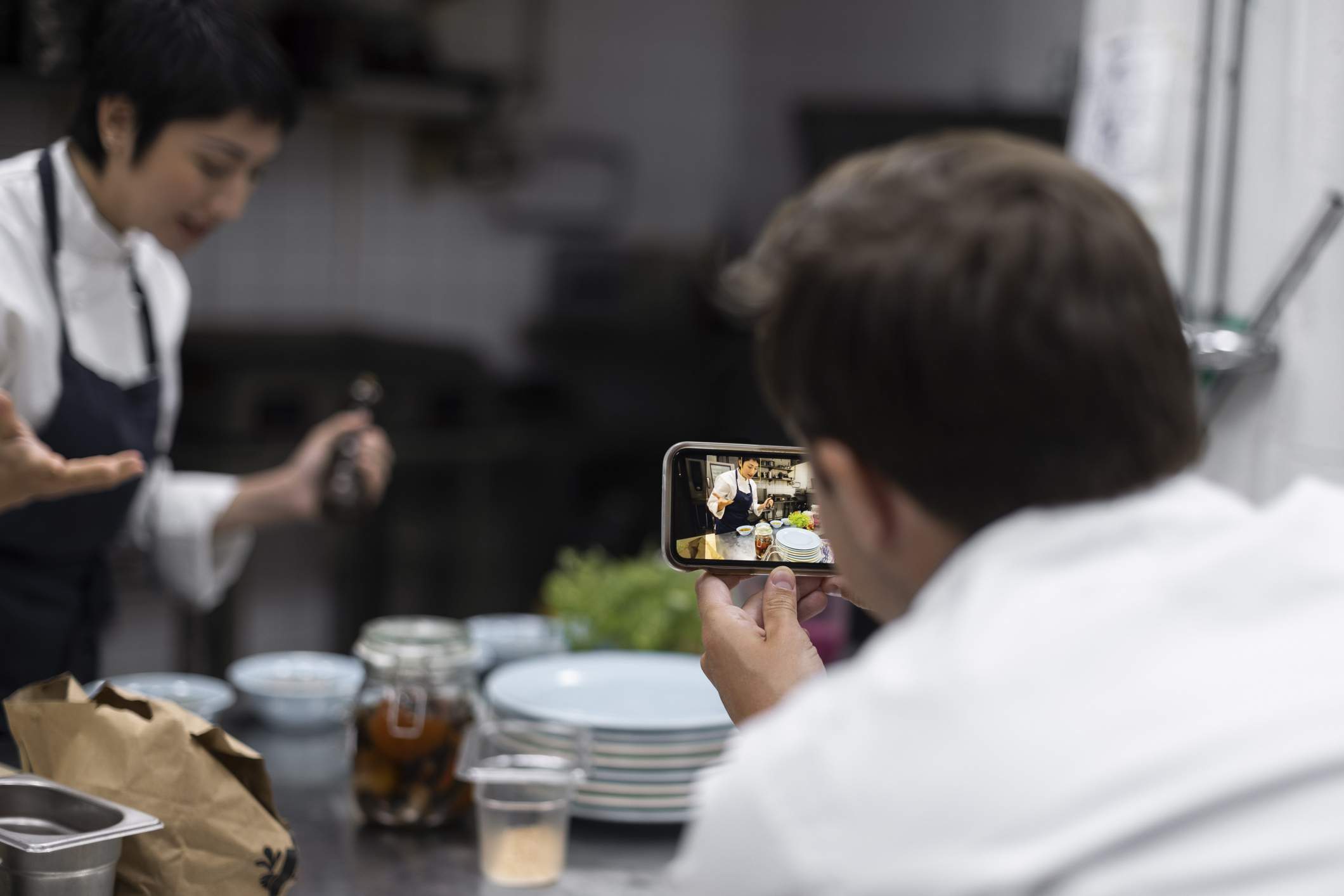
How to market a restaurant on Facebook
In general, people use a Facebook page as the hub for their social identities. It’s where they go to engage with ideas and content from friends, family, colleagues, communities, and brands. The content you post on Facebook should educate and inform guests or inspire an emotion.
Great food photos can lead directly to new guests. Like Instagram, Facebook is a prime channel for restaurant lovers. In one survey, almost half of respondents said they search Facebook to find restaurants.
Facebook’s live streaming video feature allows for unscripted moments like a trip to the market, the arrival of a particularly exciting seasonal ingredient, or just having fun with your bar or front-of-house staff. Remember, your fans want to hear from you! Engage them by posting two to three times per week.
How to market a restaurant on Twitter
Twitter serves social media users a stream of news and real-time and event-based content, and people use it to follow accounts that align with their interests. It’s a perfect platform to connect with people around shared passions–like food.
Content posted on Twitter often taps into trending topics and serves as an announcement forum for restaurants. It’s also a great way to communicate directly with guests. The least visual of all the platforms, Twitter can be a good fit for you if you don’t love taking photos.

How to market a restaurant on Snapchat
Snapchat allows users to send and receive photos or videos that disappear after a certain period of time. It’s like being able to give real-time updates and reveal quick moments from your life, but in image (or video) form.
A quick primer on how to use it: once you sign up, you can add friends, or friends can add you, either via searching your username or snapping your Snapcode (more on Snapcodes in a second).
To take a snap:
- Press down on the circular button in the center (like you are taking a photo).
- To take a video, just hold down on that same button until you are done recording.
- Embellish your Snapchat with a caption.
- Add lenses (fun images placed over people’s faces).
- Add geo-filters (designed, location-based tags).
The learning curve may take a little longer than some of the older platforms, but it’s an effective way to reach a particular audience. Because they’re so fleeting, posts on Snapchat are a great way to experiment with creating new types of content.
How to market a restaurant on TikTok
This is one of the fastest-growing social media platforms out there. Started in 2016, this video-based social media network is smaller than the major names in social media for now, but using it is a highly targeted way to reach Gen Z consumers (ages 6 to 24).
TikTok’s strength is helping users discover new people and brands via its algorithm-powered “For You” suggestions. In other words, it can help young new guests find you.
And once you’ve picked the social media channels that are right for you, here are some tips to help you succeed no matter which apps you’re using.

Create your social media accounts
Brand new to social media? Here’s a crash course on starting from a blank slate:
- Download the app on your mobile device or tablet. This is often the only way to sign up.
- Create an account. This involves choosing a username. Consider including both your business name and location. You can change your username at any time, but once you’ve established a following, changing things around could cause confusion.
- Use Google as a resource throughout the sign-up process. Someone else has had your question before. You can find out how to do just about anything on any platform with a quick search.
Put facts up front
As a practical matter, all relevant information about your business should be easily accessible on your social media profile pages, your website, and your business page.
- List front and center:
- Contact information
- Hours of operation
- Location
- Menus links
- Services offered
Why risk a customer leaving your page to find additional information and getting distracted? After interacting with you online, potential guests should not only know what you do but also what separates you from your competition.
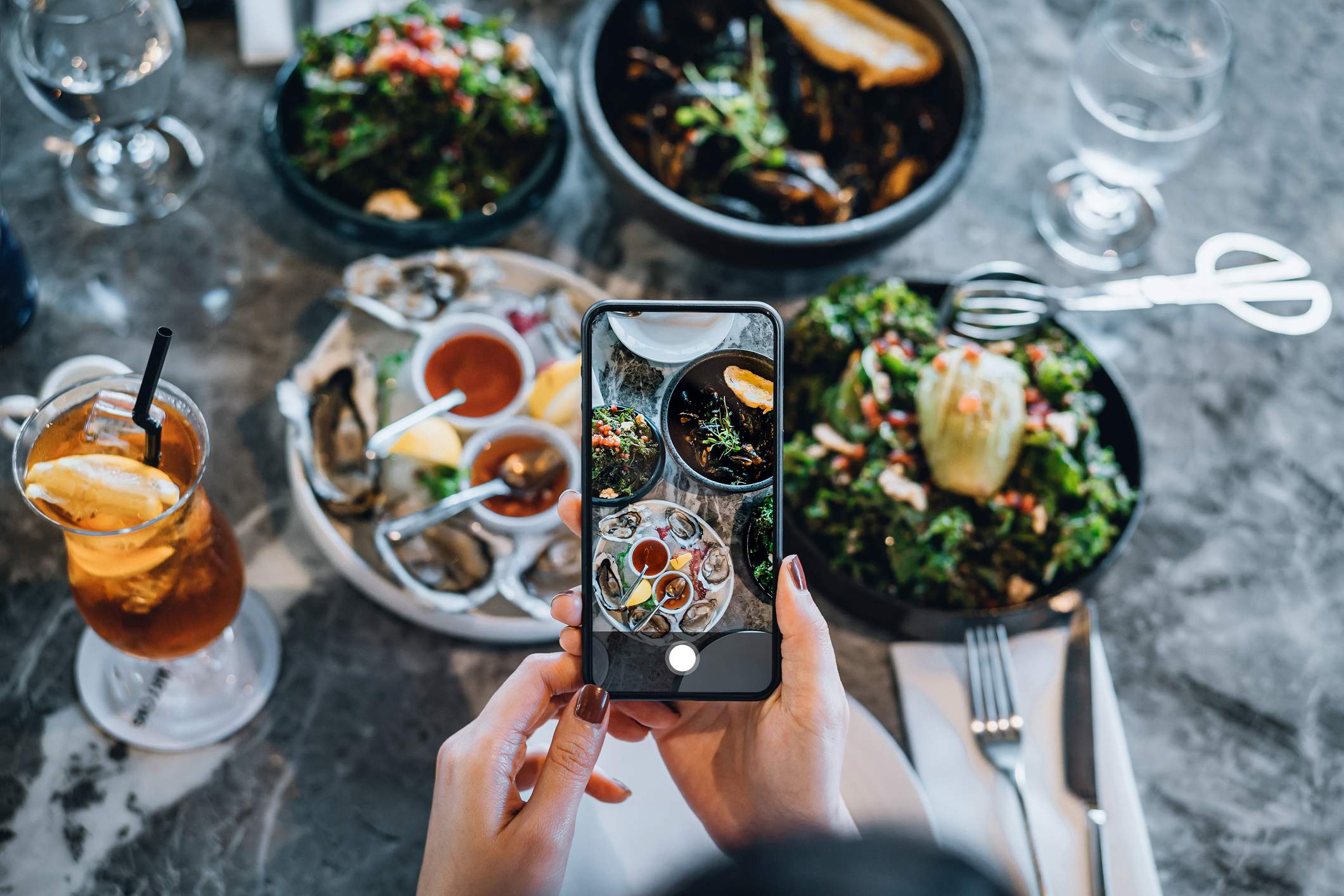
Share your best photos
If there’s a golden rule of social media, this is it. Words are important, but great photos equal success. You don’t need a professional photographer, but put some creative thought into images of composed dishes or other brand-specific images.
Here’s some top-level advice:
- Pay attention to light and shadows.
- Make sure images are in focus. Thankfully, phone cameras have become really good, so capturing well-focused images is easier than ever.
- Don’t post anything that’s too blurry, too dim, or just unappetizing.
Go behind the scenes
People love getting that peek behind the curtain of how restaurants work—Snapchat and the stories feature on Facebook and Instagram are the perfect way to share these glimpses. You can give your fans a look backstage into the food prep area or in the kitchen. You can use it to profile employees. Diners want to know you’re having as much fun in the kitchen as they are in the dining room.
Partner for takeovers
Have a particular brand that you love using? Do you have a superfan with a sizable following? Give that company or person access to your social media account for the day, and let them take your users behind the scenes in their operations. If it’s a cheese company, maybe it’s a tour of the farm; if it’s wine, maybe it’s a tutorial on grape varietals. Takeovers are especially popular on Instagram. Get creative!

Use hashtags
On the platforms that support it, use trending hashtags to tap into conversations and help food lovers find you. Some popular food hashtags are #Food, #Foodporn, #Foodie, #Instafood, #Foodgasm, #Foodstagram, #Foodpics, #Yummy, #Delicious, and #Foodlover. Participate in trending conversations via hashtags to increase reach and attract new followers. There’s one caveat here: Make sure these conversations are in line with your brand, so it doesn’t feel like a stretch.
Share news
Established restaurants can use social to create news events the same way a new restaurant does. You can promote specials, anniversaries, new menus, new dining room changes, a new staff member—anything!
Have fun with it
You’ve grown your following by doing what works best for you. Now’s a great time to push the boundaries and try new things to see how people respond. Stick to your strategy here, but don’t be afraid to get creative or take inspiration from others who do it well.


